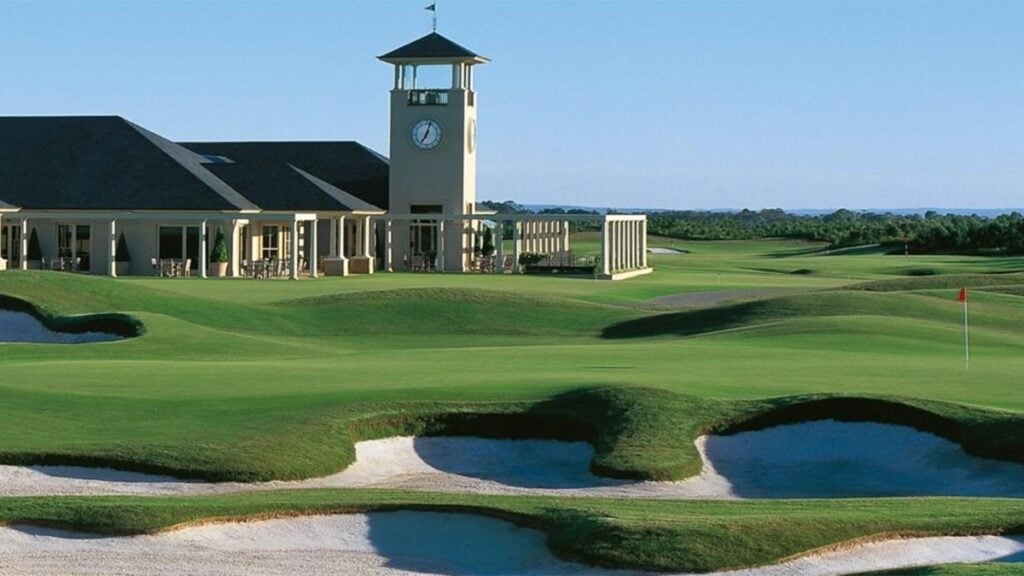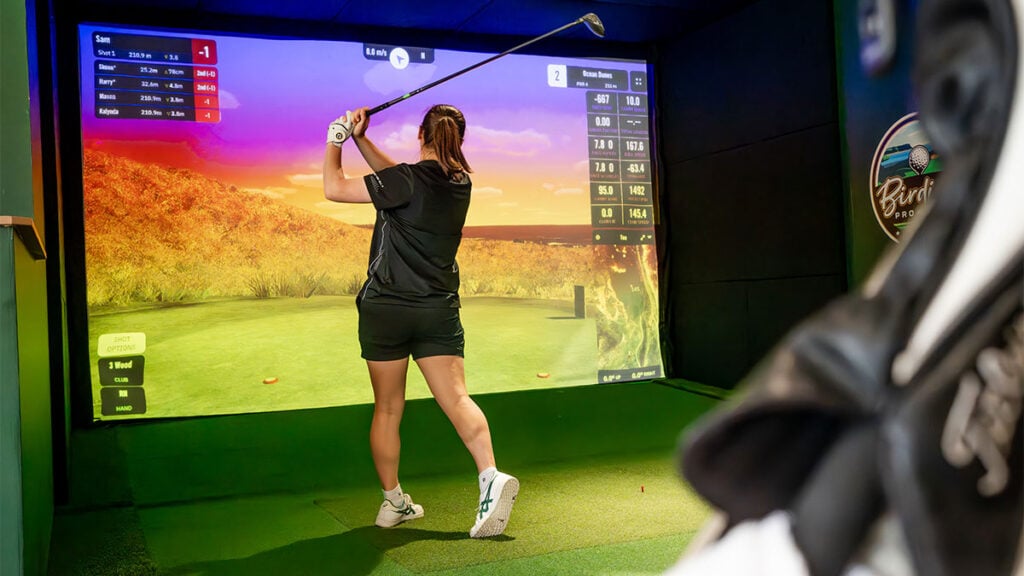This is a report on golf that is going to be played on a new type of grass, and you’re probably thinking that unless we’re referring to the famed strain of “Carl Spackler Bent,” then what’s the big deal? Fair enough.
But this story has its roots, so to speak, in the formation of TGL, the tech-infused team golf league that makes its debut in January. Created by Tiger Woods, Rory McIlroy and their TMRW Sports partnership, TGL is essentially a made-for-television competition among PGA Tour players contested on a giant golf simulator in a specially built arena in Palm Beach Gardens, Fla. A portion of the competition—shots from 50 yards and in and on the green—will move to a custom-built “adaptable” green complex that can be constantly reconfigured to change slopes on the green.
Here’s where the tech-infused initiative goes a step farther—onto a relatively new strain of grass that’s ideal for the TGL concept. Hitting off Astroturf or mats are plenty good enough for you and your fellow simulator fans but not for touring professionals who will be competing at an indoor arena each week.
When Scott Armstrong, vice president of competition technology and operations, joined TGL in 2022, Mike McCarley, CEO of TMRW Sports and partner with Woods and McIlroy, asked if real grass could be incorporated into the field of play. Armstrong turned to Dr. Trey Rogers of Michigan State University, who was lead scientist in creating a grass that would grow indoors at Detroit’s Silverdome for the 1994 FIFA World Cup. Rogers, in turn, connected Armstrong with Chad Price at Carolina Green in Indian Trail, N.C., whose company specializes in growing grass on plastic.
“It really married up with what we were trying to do, and we learned a lot about the benefits of it,” Armstrong said.
RELATED: Tiger and Rory’s TGL indoor golf league reveals schedule for inaugural 2025 season
Price drove down to Florida in early 2023 with a roll of genetically modified turf called Tahoma that was exactly the same what the NFL’s Kansas City Chiefs has supplied for its practice field. Price supplied a second roll in June that was used for a test match at the TGL Performance Lab located in a sound stage at Universal Studios. Former PGA Tour player Roberto Castro was among the players who assisted with the test, and needless to say, the turf passed with flying colors—and with a few divots, too.
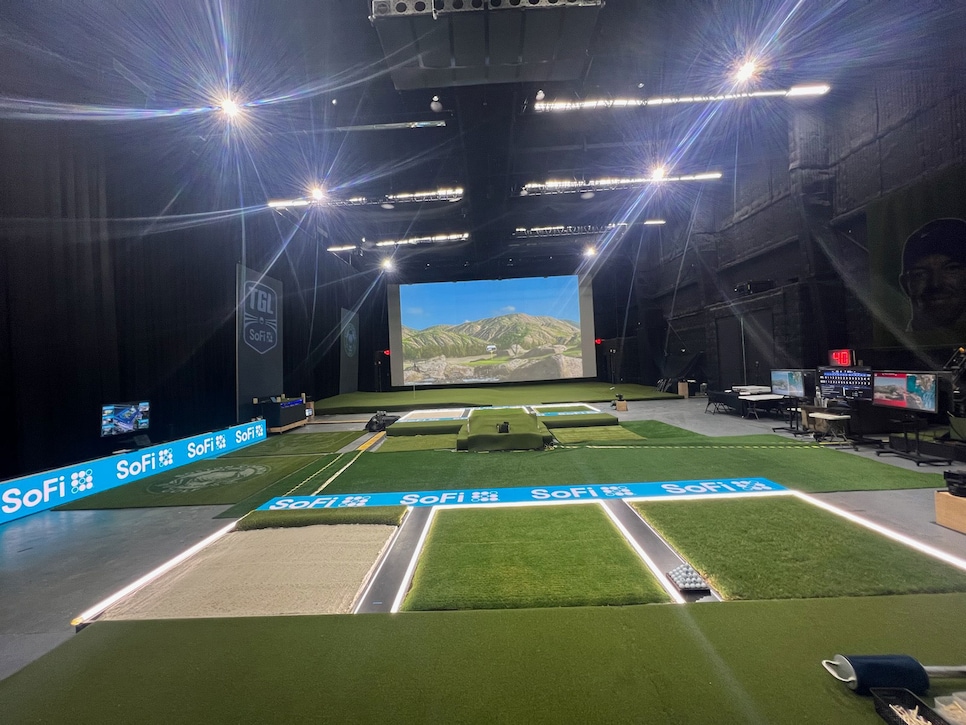
TGL officials tested out different variations of grass at the TGL Performance Lab located on a sound stage at Universal Studios in Florida. (all photos courtesy of Tanner Coffman)
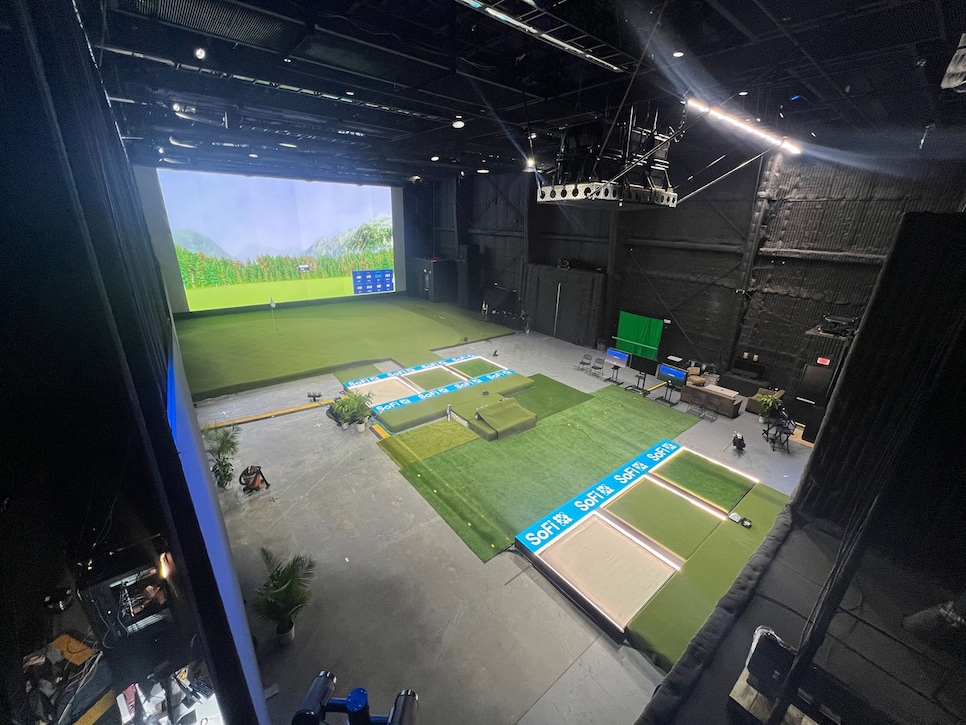
TGL officials attempted to replicate the conditions that players will face in SoFi Center to test the different strains of grass.
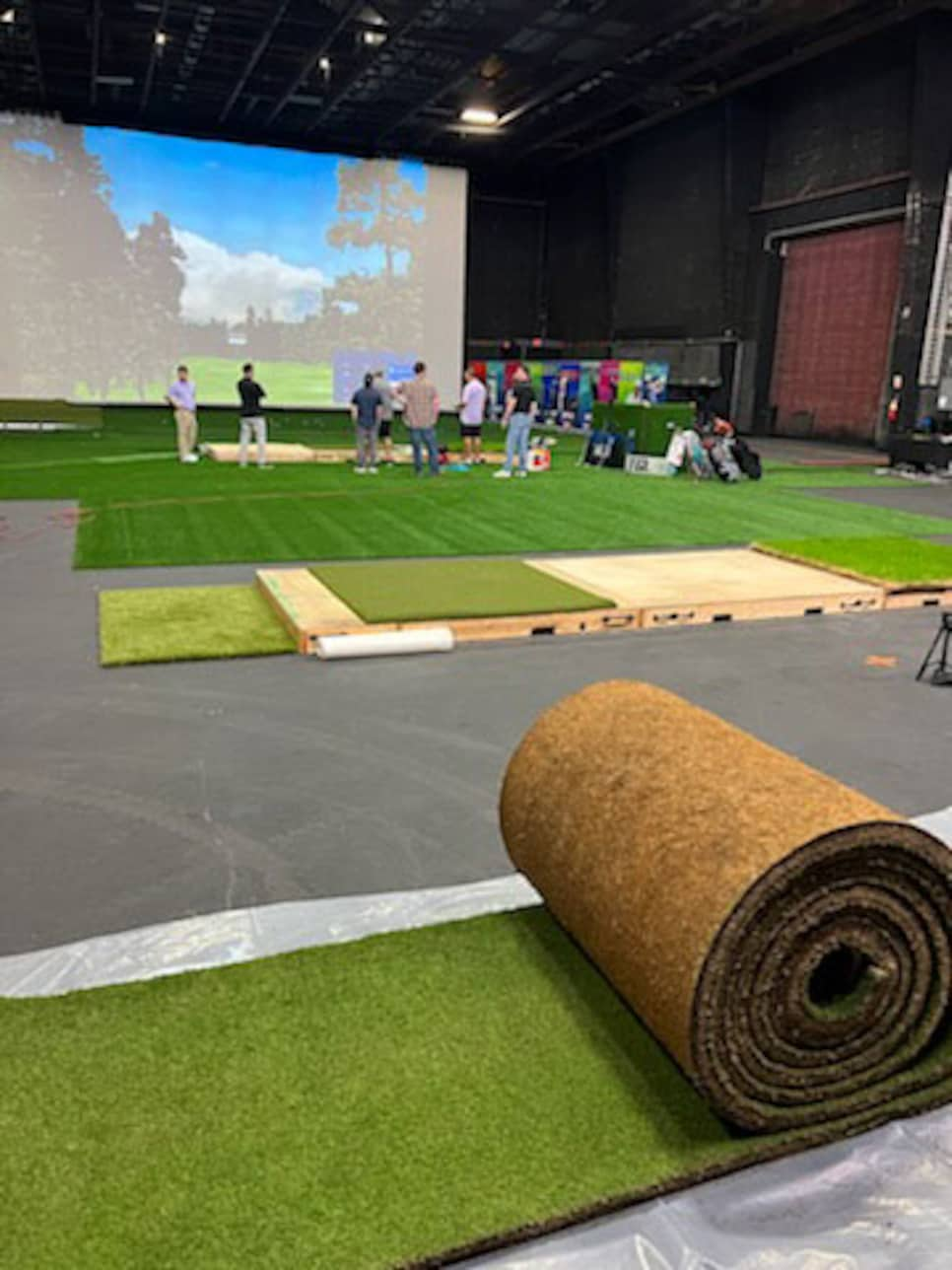
TGL officials settled on Tahoma 31 Bermuda, growing roughly 1,000 square yards of the turf.
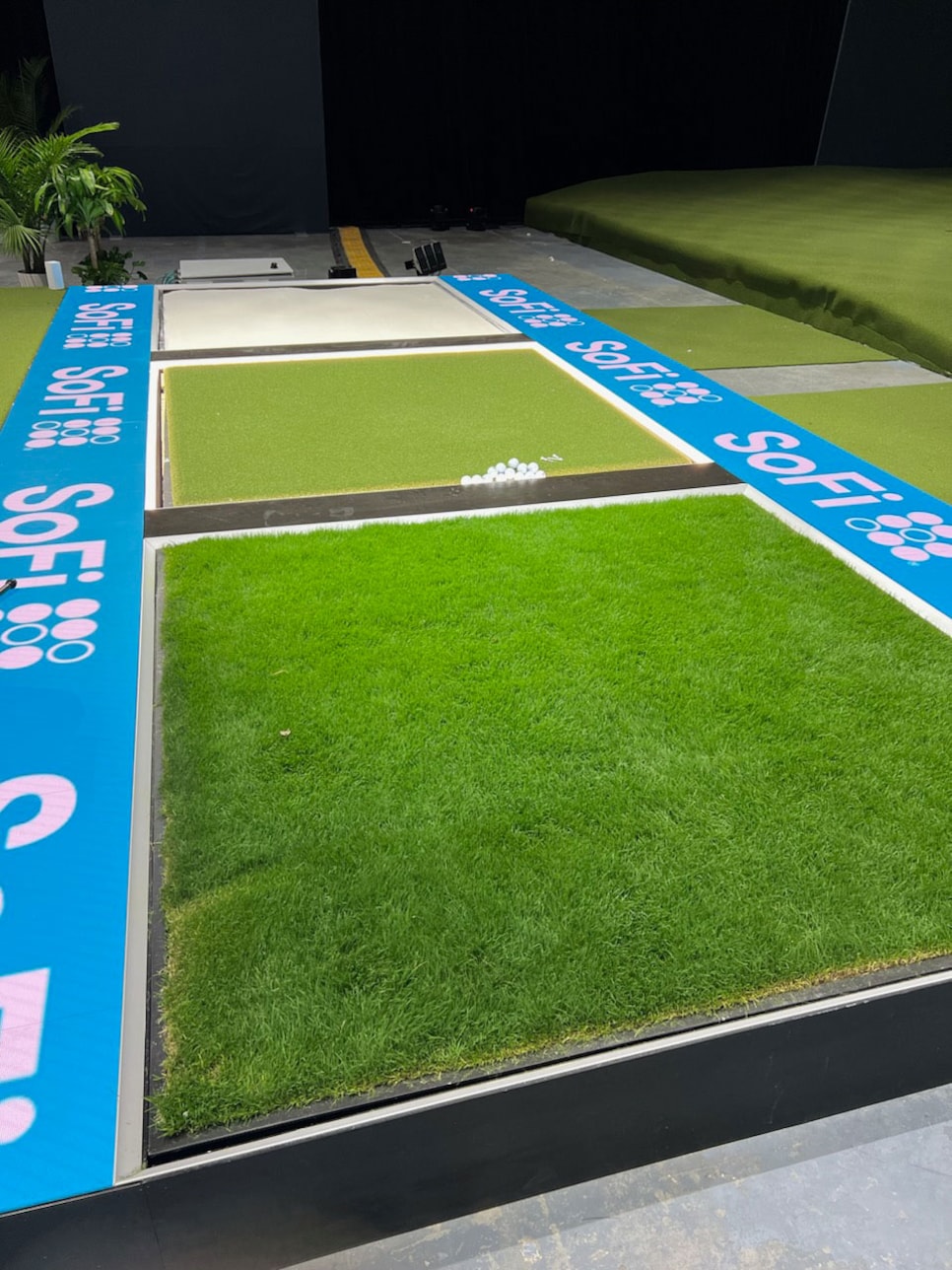
Each full shot will be played on a pallet of fresh turf measuring approximately 392 square feet and about a foot deep. The pallets weigh approximately 2,200 pounds and will be switched out for each match with special equipment to keep the staging area from being damaged.
TGL is growing roughly 1,000 square yards of the turf, known as Tahoma 31 Bermuda, near its SoFi Center stadium. According to Tanner Coffman, TGL’s director of turf management, each full shot will be played on a pallet of fresh turf measuring approximately 392 square feet and about a foot deep accounting for grass, roots and soil. These pallets weigh approximately 2,200 pounds and will be switched out for each match using special equipment so as to not damage the staging area.
RELATED: TGL, explained: 8 questions about golf’s new simulator league
We mentioned divots. The turf is deep enough to withstand even a hacker’s divot—which Armstrong admits he tested himself without really intending to—and Coffman said recovery time for repaired divots is roughly three weeks. Pros will cause considerably less damage.
The fairway cut of the turf will be a half-inch, and the rough will be three inches.
“So, this is something creeping into the golf world just because the tensile strength of it and the rhizomes and stolons [root stems] that kind of create such a thick bermudagrass style base, the recovery of that is what’s really attractive to the golf,” said Coffman, who has experimented with different seed mixtures for further refinement. “It’s the fastest Bermuda grass in recovery, which is great. Once you put that sod down on plastic and continue to grow it and mature it, when you’re ready to move it to a golf course or to a football stadium, you’re not cutting all those roots out of the ground and leaving the roots there. So you’re taking a fully mature plant from the ground and transporting it. So the grass that we’re going to get by the time we’re using it, that’s going to be nearly two years old, and so it’s going to be well established adult grass that way it’ll recover fast, look good, play well, and so it’s a very good option that we chose on that.”
Coffman also has undertaken moisture-management trials to gauge optimum playability and something called “growth blanket trials,” which help determine fiber hue for light refraction that enhances viewing presentation for both television and fans in attendance at the 1,200-seat SoFi Center.
As for the green complex, on which TGL has been working with SYNLawn on a synthetic hybrid, experimentation with layering and blade choices has produced a surface that plays virtually identical as real grass. In late August, McIlroy came in and hit a variety of pitch shots and was pleased with its playability.
“Yeah, he gave a shout out to Tanner for his grass, which is cool. And then also the synthetic surfaces that will be on or around the green,” Armstrong said. “And that was a really cool moment for me to bring Rory over and have him hit some kind of little flop shots and chip and runs and from our kind of fairway high grass onto our putting surface and seeing his reaction. He gave a grin that I’ll never forget. Yeah, this is spot on.”
“Seeing the satisfaction and the relief on Scott’s face that day was great,” Coffman added. “I think the biggest thing that a lot of the players have said coming in is their surprise with the artificial grass.”
Castro also voiced his approval. “The end result is really good,” he said. “The fairway grass in the GreenZone is very playable but will give guys some headaches when playing into the grain, just like green grass does. The putting surface reacts very realistically on pitches with good check if you catch the ball clean. I love that the green has character—you can get in some dicey spots, but that makes it fun.”
Finding the right bunker sand presented its own challenge. At first Armstrong experimented with the type of sand employed at Muirfield Village Golf Club in Dublin, Ohio, home of the Memorial Tournament. Its playability was optimal, but the particles were found to be just slightly larger and more angular than what was needed when paired with the synthetic putting surface. A finer sand, SP 55, eventually was chosen. It’s a granulated quartz that meets USGA specs for greens construction, but consists of the smallest granules so that it won’t sit on top of or in between the synthetic blades.
There also will be two sand tee boxes for full shots from bunkers.
“There’s minimums of the angles and the size of the grains. In my head, we can rate those good, better, best, and this sand is best of the best,” Armstrong said. “It’s not often used on golf courses strictly just because of the pureness of it raises the cost. And a traditional golf course, you’re looking at [using] 300, 400 tons of sand just to do the minimum sand capping versus TGL. We’re looking at 11 to 12 tons.”
Of course, some courses can afford the price tag for the granulated quartz, which is mined out of Spruce Pine, N.C. There is a club in Augusta, Ga., for instance, that employs the sand in its 44 bunkers.
TGL debuts on Tuesday, Jan. 7 at 9 p.m. EST, and will be televised by ESPN. The opening match features the New York Golf Club, led by reigning PGA and Open champion Xander Schauffele, facing the Bay Golf Club, which includes major winners Shane Lowry and Wyndham Clark. The season runs through March 24-25 and culminates in a best-of-three playoff series.
This article was originally published on golfdigest.com

